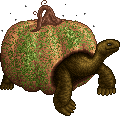me--->
animal chat-room
-
Sorren1224

- MagiStream Donor



- Creatures • Trade
- Posts: 6880
- Joined: April 1st, 2011, 6:44:03 pm
- Gender: Non-binary
Re: animal chat-room
I love animals. I think anyone killing them without a cause is completely.... well, stupid.
-
chubbychoco


- Creatures • Trade
- Posts: 471
- Joined: April 13th, 2012, 1:20:03 am
- Gender: Female
- Location: Cactus Hell, CA
Re: animal chat-room

So, does anyone else here love pangolins? Does anyone else know what they are..?
Re: animal chat-room
Wolves are amazing feats of nature that should not be hunted or shot. Honestly, who still beleives the ridiculous story that wolves eat humans?And i also love horses i ride almost every week for at lest 3 hours 
-
chubbychoco


- Creatures • Trade
- Posts: 471
- Joined: April 13th, 2012, 1:20:03 am
- Gender: Female
- Location: Cactus Hell, CA
Re: animal chat-room
I agree, and I am wildly against the fur industry. Sure, I'm okay with leather, because they use everything on the cows - organ meat becomes pet feed, bones become bone meal for exotic plant fertilizer, and the muscles and ribs find their way to tables to feed hungry families. Even the brain, tongue, nose, etc. become headcheese (ewwwww). But fur itself is inhumane. Beyonce's chinchilla coat made me want to skin her.Sorren1224 wrote:I love animals. I think anyone killing them without a cause is completely.... well, stupid.
*clears throat* Okay, I'm not going to turn this into a fur debate. I just had to get that off my chest.
-
Sorren1224

- MagiStream Donor



- Creatures • Trade
- Posts: 6880
- Joined: April 1st, 2011, 6:44:03 pm
- Gender: Non-binary
Re: animal chat-room
I know what they are! They're an amazing little scaly anteater-ish thing that lives in trees and somewhat resembles an armadillo.chubbychoco wrote:
So, does anyone else here love pangolins? Does anyone else know what they are..?
-
chubbychoco


- Creatures • Trade
- Posts: 471
- Joined: April 13th, 2012, 1:20:03 am
- Gender: Female
- Location: Cactus Hell, CA
Re: animal chat-room
With hot weather rapidly approaching in the USA, and snake populations in most states predicted to be at an all-time high, I feel I should post the following for all North American residents.
Dangerous animals - here, I refer specifically to rattlesnakes, with the many varieties being the most common venomous snakes in North America - should not be killed. You should educate yourself about them, avoid them, and respect their strengths. Lopping a head off of any kind of snake with a shovel doesn't make you any more of a hero than you would be if you broke the neck of a puppy. It just makes you cruel.
I understand some people know others who have been bitten by snakes...maybe even lost someone to one. I am sorry for this, and I do not, even for a moment, think that they in any way deserved that for 'intruding on the snake's space.' That's just stupid. But remember, that snake didn't do it to be evil, or to cull the human population. It was scared, and it didn't think that it had time to rattle off a warning. In the event that the snake was not equipped with a rattle (the other three North American venomous species, cottonmouth/water moccasins, copperheads, and coral snakes have no warning mechanisms), it did the only thing it could think to do to survive when escaping failed. It bit.
A little common sense and some reading will prevent snakebites. If you find one on your property, don't panic - and for heaven's sake, don't try to mess with it. Call animal control. They'll capture it and take it to a sanctuary or control center, where its poison will be put to good use developing antivenin and, if it's a rattlesnake, immunizations for pets (they're still working on one for humans).
Want to learn more about snakes in your area and how to identify them? http://www.enature.com/home/ Remember the old Schoolhouse Rock motto - knowledge is power. And for those who just want the Cliffnotes, I've posted some below in a spoiler.
Rattlesnakes
These beautiful but deadly snakes are found in Canada, Mexico, and all but four of fifty US states. You are most likely to encounter rattlesnakes when you are hiking, camping, or doing other outdoor activities, particularly during warmer days. During the summertime, they are most active at night, when their prey is scampering around. Remember, these snakes don't like to be out in the open, so if there is one where you plan on sitting, walking, etc., remember that it's probably just passing through. Leave it alone and you ought to be able to enjoy that spot in safety soon enough.
Copperheads

These mottled gray-brown and black snakes live mostly in the eastern and northeastern US. As a single species, it is the most common venomous snake in the US (there are more rattlesnakes than copperheads, yes, but that's with every species combined). Though rarely fatal as long as proper medical treatment is administered, you'll still want to avoid them. You can do so by steering clear of small hiding places such as nooks in rock walls, woodpiles, fallen logs, etc. In the south, copperheads are nocturnal during the summer months, but they are commonly active during the day during the spring and fall everywhere.
Water Moccasins/Cottonmouths

These snakes live in the southeastern US, mostly in and around Florida. Again, these snakes are not often fatal as long as people are treated swiftly and don't panic, but being bitten is not fun. They are more territorial than other snakes, and may not always flee from you, so your best bet is to avoid their favorite places: murky-watered streams, ponds, ditches, marshes, canals and swamps. They will often leave the water, but will almost always stay close to it.
Coral Snakes

These snakes live in wooded, sandy, and marshy areas of the southeastern United States. They prefer not to come up from their burrows, but since they have to sometimes, it's best to know what to look for and avoid. The most reliable way of telling them from copycat species is the old rhyme: "Red-touch-yellow can kill a fellow, red-touch-black means poison lack." Because coral snakes are not pit vipers, they lack the fearsome fangs and diamond-shaped heads attributed to most venomous snakes, and must literally chew venom into their prey or attackers. The bite might seem harmless at first - to think it is, though, would be a mistake. Get treated immediately, or you risk cardiac arrest. Fortunately, you probably won't run into these beauties unless you're digging.
Dangerous animals - here, I refer specifically to rattlesnakes, with the many varieties being the most common venomous snakes in North America - should not be killed. You should educate yourself about them, avoid them, and respect their strengths. Lopping a head off of any kind of snake with a shovel doesn't make you any more of a hero than you would be if you broke the neck of a puppy. It just makes you cruel.
I understand some people know others who have been bitten by snakes...maybe even lost someone to one. I am sorry for this, and I do not, even for a moment, think that they in any way deserved that for 'intruding on the snake's space.' That's just stupid. But remember, that snake didn't do it to be evil, or to cull the human population. It was scared, and it didn't think that it had time to rattle off a warning. In the event that the snake was not equipped with a rattle (the other three North American venomous species, cottonmouth/water moccasins, copperheads, and coral snakes have no warning mechanisms), it did the only thing it could think to do to survive when escaping failed. It bit.
A little common sense and some reading will prevent snakebites. If you find one on your property, don't panic - and for heaven's sake, don't try to mess with it. Call animal control. They'll capture it and take it to a sanctuary or control center, where its poison will be put to good use developing antivenin and, if it's a rattlesnake, immunizations for pets (they're still working on one for humans).
Want to learn more about snakes in your area and how to identify them? http://www.enature.com/home/ Remember the old Schoolhouse Rock motto - knowledge is power. And for those who just want the Cliffnotes, I've posted some below in a spoiler.
Rattlesnakes
Spoiler

These beautiful but deadly snakes are found in Canada, Mexico, and all but four of fifty US states. You are most likely to encounter rattlesnakes when you are hiking, camping, or doing other outdoor activities, particularly during warmer days. During the summertime, they are most active at night, when their prey is scampering around. Remember, these snakes don't like to be out in the open, so if there is one where you plan on sitting, walking, etc., remember that it's probably just passing through. Leave it alone and you ought to be able to enjoy that spot in safety soon enough.
Spoiler

These mottled gray-brown and black snakes live mostly in the eastern and northeastern US. As a single species, it is the most common venomous snake in the US (there are more rattlesnakes than copperheads, yes, but that's with every species combined). Though rarely fatal as long as proper medical treatment is administered, you'll still want to avoid them. You can do so by steering clear of small hiding places such as nooks in rock walls, woodpiles, fallen logs, etc. In the south, copperheads are nocturnal during the summer months, but they are commonly active during the day during the spring and fall everywhere.
Spoiler

These snakes live in the southeastern US, mostly in and around Florida. Again, these snakes are not often fatal as long as people are treated swiftly and don't panic, but being bitten is not fun. They are more territorial than other snakes, and may not always flee from you, so your best bet is to avoid their favorite places: murky-watered streams, ponds, ditches, marshes, canals and swamps. They will often leave the water, but will almost always stay close to it.
Spoiler

These snakes live in wooded, sandy, and marshy areas of the southeastern United States. They prefer not to come up from their burrows, but since they have to sometimes, it's best to know what to look for and avoid. The most reliable way of telling them from copycat species is the old rhyme: "Red-touch-yellow can kill a fellow, red-touch-black means poison lack." Because coral snakes are not pit vipers, they lack the fearsome fangs and diamond-shaped heads attributed to most venomous snakes, and must literally chew venom into their prey or attackers. The bite might seem harmless at first - to think it is, though, would be a mistake. Get treated immediately, or you risk cardiac arrest. Fortunately, you probably won't run into these beauties unless you're digging.
-
Grizz

- MagiStream Donor

- Creatures • Trade
- Posts: 1297
- Joined: March 21st, 2012, 9:22:40 pm
- Gender: Female
- Location: Draco Caelum
Re: animal chat-room
Query (and no, I'm not being factious or snarky) but you mentioned common sense will stop problems. I, for the most part agree with you, but having a child in the house that is not even in school yet, how does one prevent a snake bite with them, especially since the only poisonous snake we have in my state looks very much like a garter snake?
Just under 4,000 creatures to click here! Now you need not click my keep.













Spoiler

-
chubbychoco


- Creatures • Trade
- Posts: 471
- Joined: April 13th, 2012, 1:20:03 am
- Gender: Female
- Location: Cactus Hell, CA
Re: animal chat-room
:3 It didn't come across as snarky. It's a perfectly legitimate question.Grizzogold wrote:Query (and no, I'm not being factious or snarky) but you mentioned common sense will stop problems. I, for the most part agree with you, but having a child in the house that is not even in school yet, how does one prevent a snake bite with them, especially since the only poisonous snake we have in my state looks very much like a garter snake?
Which snake do you live around? I'll gladly give you localized tips if I know any. However, I don't have kids, so you may want to visit a website specialized for such answers. http://www.enature.com/expert/ allows you to ask wildlife experts your questions, and Cathy Nordstrom is specifically keyed for backyard advice. I like enature; I find it very helpful.
But, since you asked, here's my two cents: if you live somewhere where venomous snakes are easily mistaken for other kinds, the best course of action is to teach your child to avoid snakes entirely. My brother has done so with his children (three and four, and obsessed with catching anything that stays still long enough, lol), and it's worked like a charm. They still have plenty of fun with lizards, bugs, and one highly unsuccessful attempt to catch a ground squirrel. However, since children will be children, and children do not always listen, I would advise you to keep an eye on your young one during snake peaks.
-
Sorren1224

- MagiStream Donor



- Creatures • Trade
- Posts: 6880
- Joined: April 1st, 2011, 6:44:03 pm
- Gender: Non-binary
Re: animal chat-room
Every day, on my way to school, I pass a tree where an eagle lives. She's very beautiful. There used to be two of them, hen the other one disappeared.




















